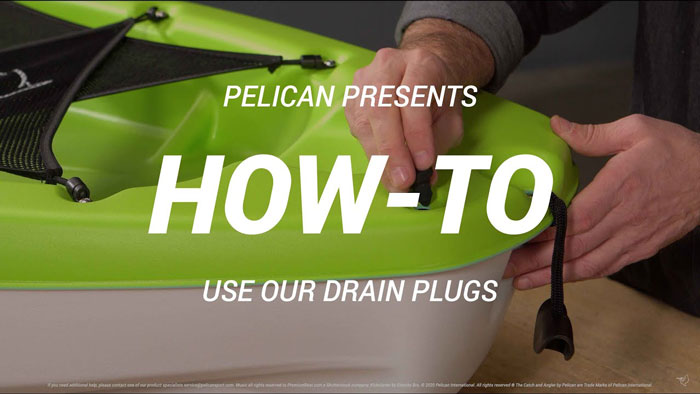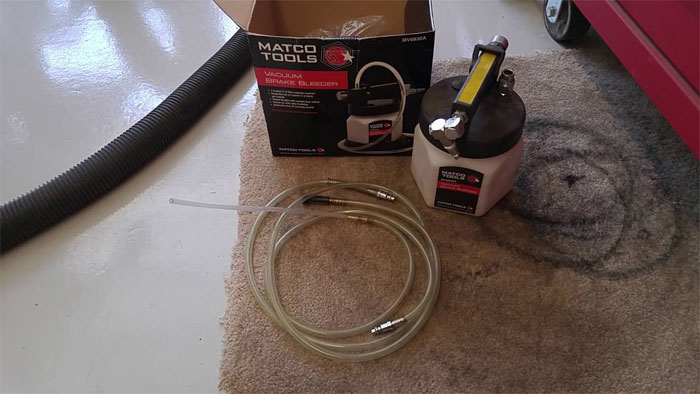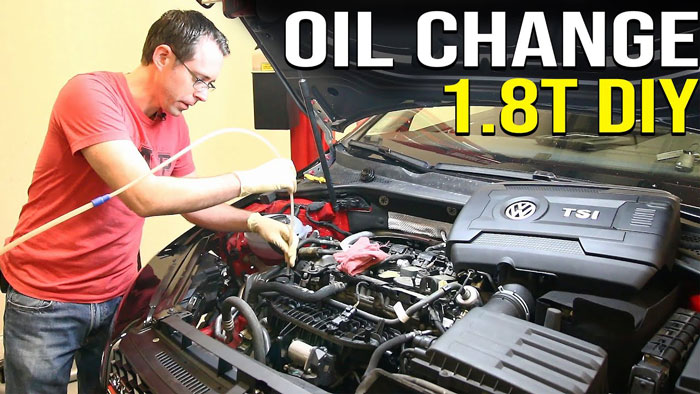Oil Extractor vs. Drain Plug: Which Process Works Better?
by Chris Lewis.
Did you know that the life of your car engine depends on your cleaning?
Now, it is true that you can prevent damage to your engines by extracting oils. Due to the by-products produced from oil, the engine gets damaged. No matter how costly your oil is or your car is, it is bound to get damaged from these by-products.
There are many ways to extract engine oil. Two of the most popular methods are using an oil extractor or simply via the drain plug.
In this oil extractor vs. drain plug guide, we will be discussing the process and the pros and cons to reveal to you the most suitable method.
Contents
Oil Extractor

This is an extraction device that uses the vacuum mechanism to pump out oil directly from the crankcase.
It has a long tube to collect oil from the dipstick, and it is collected to the plastic container attached. You simply have to pump the handle to create a vacuum, and the oil will automatically collect in your clean container.
And this is by far the cleanest process. You do not need to raise your car; therefore, this job is done one-handed.
But the only disadvantage of using this oil extractor is that it cannot extract the sludge. Sludge is heavy and cannot be collected by the thin tube. So it remains as a precipitate.
How to Use an Oil Extractor?
It is quite an easy procedure to suction out oil from the car engine. The steps are given below.
- In order to extract engine oil, your oil needs to be warm. Turn the engine on for 5 minutes and then turn it off to let the oil cool over 15 minutes. Make sure the oil is not too hot.
- Open the car hood and then proceed to pull out the dipstick. Then, keep pushing the tube about 2-3 feet into the oil dipstick till it reaches the bottom.
- If you are using a motor oil extractor, attach the extraction pump to a car battery and put the end of the tube in a clean container. Then turn on the pump to extract oil.
- On the other hand, if it is a vacuum extractor, there is a little less fuss. Simply pump to create a vacuum, and your oil will collect in the attached container.
- When almost all the oil is extracted, you will see air bubbles in the tube and in the container. To extract the remaining oil, bend your tube a bit more to get most of it out.
- Remove the oil tube carefully and be aware of the oil dripping from the tube.
- Replace the engine oil filter.
- Add engine oil according to the manual.
- Allow the oil to reach the oil pan.
- Check your oil level and add accordingly within the level.
Pros
- The easiest way to suction out your engine oil
- Not messy at all as your oil is collected in the adjacent container
- No chance of oil leak
- No need to lift your car up
- No need to visit a mechanic
- Fewer tools required for the procedure
- Simple to use but you will have a good workout for sure
Cons
- Time-consuming
- Cannot extract out the sludge
- Needs a lot of compressed air supply
- The tubes can run short
- If the oil filter is situated under, the car you will need to lift it u
Drain Plug

The drain plug is a large plug or screw under the oil pan of the engine. This is located on the underside of every car. Extracting oil via this process is the quickest way. Although it gets quite messy with the oil leaking, it is done everywhere.
How to Drain Oil via the Drain Plug?
Here’s the entire process for you explained in the easiest manner.
- Lift up your car by using a jack, or if it is spacious enough, crawl under the car.
- Locate the drain plug. It is a large screw-like thing at the lowest end of the engine.
- Place a large clear container underneath it.
- Unscrew the drain plug and cover your hand with a cloth or wear gloves while doing so.
- When the oil drains out completely at the top of your engine there is an oil filler hole, remove that. With the help of a wrench, twist the oil filter counterclockwise.
- The filter usually has some oil in it, so carefully remove that and replace it with a new engine oil filter.
- Moisten the gasket of a new oil filter and place it properly.
- Clean around the drain plug and screw it down tightly.
- Now with the help of a funnel pour, new engine oil in the oil filler hole according to capacity.
- Replace the oil filler cap and turn on the engine for at least a minute to look for any leaks or oil drainage.
- Turn off the engine and let the oil settle up in the oil pan. Add more oil if needed.
- Take your car for a test drive to make sure everything works perfectly.
Pros
- Quickest way
- Takes little time
- It is a popular method of oil changing
- All the oil with precipitates gets drained out
Cons
- It is a really messy job
- You need to lift up your car to reach the drain plug
Oil Extractor vs. Drain Plug

This is a common question among every person who owns a car. Should I spend any more money on buying any extractor, or should I just manually remove the oil by the drain plug?
Both of these methods are good and depend upon personal preference. If you are a clean person and love to do your work by yourself, an oil extractor solves your problem. On the other hand, if you want to get the job done quickly, then using the drain plug should be your preference.
Draining oil by the drain plug is surely the quickest way, but it also is quite messy. You might spend your extra time cleaning up your garage if you prefer this method.
Also, you will need to lift your car up to reach the drain plug. Still, this is preferred by many, as you will not need any other tool to get your job done.
With the latest modifications, the oil extractor has become a tool of choice. With the motor extractors, you can extract out almost all the oil, including the sludge.
But if the oil filter is placed underneath the car, then you will have to lift it up to get access. In that case, you might prefer using the drain plug.
So there are a lot of pros and cons for each of the tools, and choosing one of them is dependable on the user.
Conclusion

Tools like oil extractors are made to make our daily life a little less complicated. While it has many flaws, the drain plug itself is not at all free of trouble.
Although my personal favorite is the oil extractor for its decreased amount of workload and a clean process. But we will let the readers decide for themselves what they think is the best method.
 |
 |
 |
 |

About Chris Lewis.
Chris Lewis is a passionate individual with a deep affinity for the world of automobiles. From a tender age, his fascination with cars was nurtured by his father, a seasoned mechanic based in the vibrant city of San Francisco. Growing up under the watchful guidance of his skilled father, Chris developed an early aptitude for all things automotive.
Thoughts on "Oil Extractor vs. Drain Plug: Which Process Works Better?"
 |
 |
 |
 |
Get FREE Filters now. Or latest free tools from our best collections.
Disable Ad block to get all the secrets. Once done, hit any button below
 |
 |
 |
 |